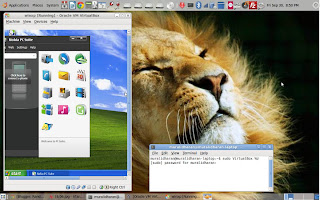Where do Ideas come from ?….
“Little by little, I think we build a conscious understanding of what we’re born already knowing: what the highest inner us wants to believe, it’s true. Our conscious mind, though, isn’t happy till it can explain in words. “Before I knew it, in just a few decades, I had a system of thinking that gives me answers when I ask.”……..
“What was the question?” I said. “Oh. Where do I get my crazy ideas?
Answer: sleep-fairy, walk-fairy, shower-fairy. Book-fairy.
———–-Richard Bach in “A Bridge Across Forever
Where did Mahatma Gandhi get his unique ideas like ‘Sathyagraha and civil disobedience ‘ from ?
I have been doing some study on Gandhi literature. The complete works of Gandhi runs in to a whopping 90 volumes. He was not a prolific writer of books / novels, but he wrote regularly for Navjeevan, Young India and Harijan. But what is amazing is that he was unusually conscientious about replying to all his correspondents from South Africa, England, India and elsewhere,writing a many as 70-100 letters per day for over four decades.
In a speech , later published in Navjeevan, he explains , where he got his ideas from. Gandhiji never accepted anyone as his religious guru. Three men have had great influence on Gandhiji’s thinking. Among them he places poet Rajchandra first, followed by Count Leo Tolstoy and John Ruskin.
How many of us have heard of Poet Raj Chandra or John Ruskin ? At least I have not.
Now I am a little more knowledgeable about these gentlemen.
Raj Chandra was primarily a diamond and pearl merchant, who like a true karma-yogi, sort of renounced the worldly attachments even while actively doing business.
To Quote Gandhiji …..
“During the two years I remained in close contact with him, I felt in him every moment the spirit of ‘vairagya’. One rare feature of his writings is that he always set down what he had felt in his own experience. there is in them sense of unreality……He had always a book on some religious subject by his side and a note book with blank pages. The latter, he used for noting down any thought which occurred to him….
…Whatever he was doing at the moment, whether eating or resting or lying in bed, he was invariably disinterested towards worldly things….
….I watched his daily life respectfully, and at close quarters. he accepted whatever was served at meals. His dress was simple, a dhoti and a shirt… It was the same to him whether he squatted on the ground or had a chair to sit on.
While the Poet, Rajchandra or Raichand Bhai as he was better known, influenced Gandhiji by his close association , John Ruskin and Toltoy influenced him through their writings.
To Quote from John Ruskin..,
….It is a sheer error to suppose, as is generally done, that some eduction however little or however faulty is better than no education at all. We should strive for real education alone.
………….Every human being requires three aspects of knowledge and three virtues. Anyone who fails to cultivate them does not know the secret of life. These six things should form the basis of education. Every child, whether boy or girl, should learn the properties of pure air, clean water and clean earth, and should also learn how to keep air, water and earth pure and clean and know their benefits. ‘Gratitude’, ‘Hope’ and ‘charity’ are the three desirable virtues……..
Well, at some point Gandhiji said that all we have to do is unlearn whatever we learnt in the past 50 years ( around 1850-1900).
Some ideas from Leo Tolstoy
1. In this world, men should not accumulate wealth.
2. No matter how much evil a person does to us, we should always do good to him. Such is the commandant of God,and also his law.
3. No one should take part in fighting.
4. It is sinful to wield political power, as it leads to many of the evils in the world.
5. Man is born to do his duty to his creator; he should therefore pay more attention to his duties than to his rights .
6. Agriculture is the true occupation of man. It is therefore contrary to divine law to establish large cities, to employ hundreds of thousands of minding machines in factories so that a few can wallow in riches by exploiting the helplessness and poverty of the many.
All these ideas are reflected in Gandhiji’s thoughts and in his experiments with Truth that he conducted, in his ashrams and on the larger canvas he worked on, that is “India’.
























